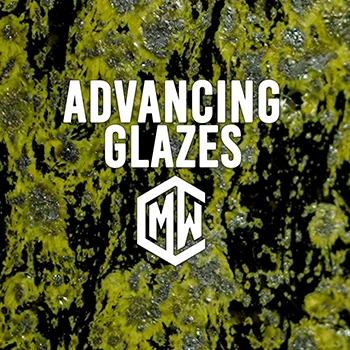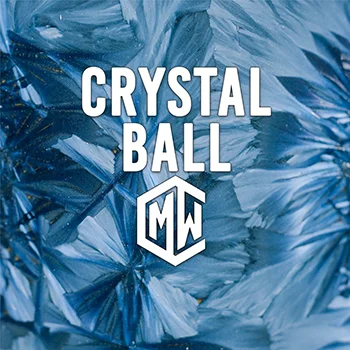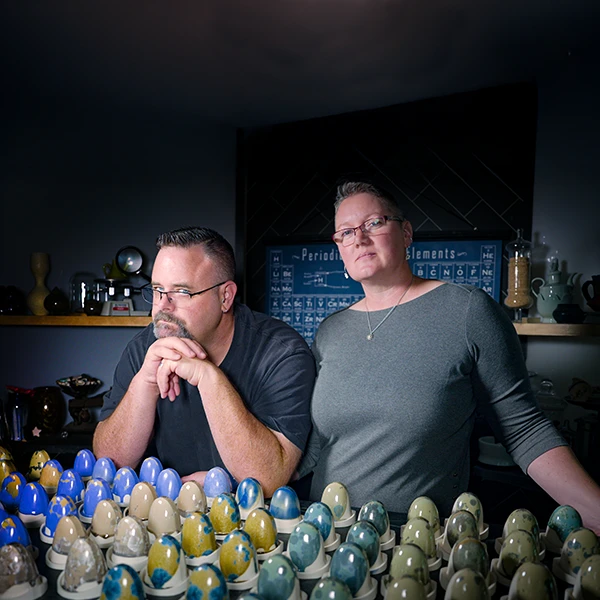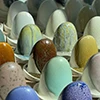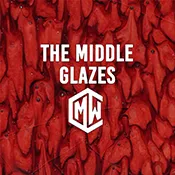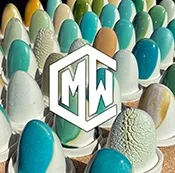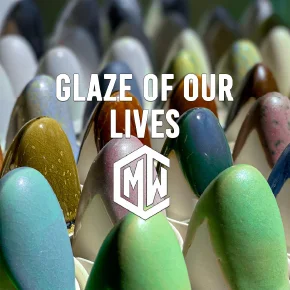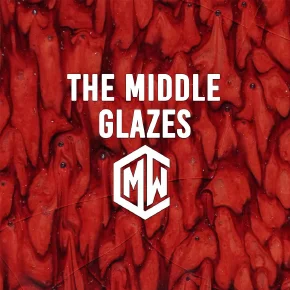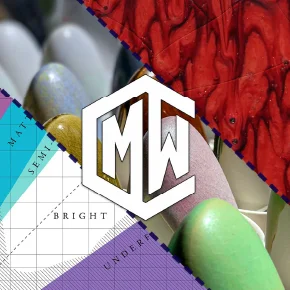There’s something truly captivating about copper red glazes. That rich, fiery hue has mesmerized potters for centuries, tracing its roots all the way back to ancient Chinese dynasties. But here’s the kicker: achieving that perfect, vibrant red is notoriously tricky. So, how do potters coax this color from humble copper? Let’s dive in!
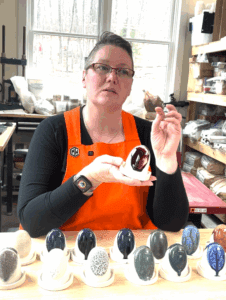
It’s a dance between chemistry, temperature, and a touch of ceramic wizardry.
The Silicon Carbide Secret: Reduction in an Electric Kiln
 Traditionally, copper reds thrive in a reduction firing, where the kiln’s atmosphere is starved of oxygen. This transforms the copper, giving it that characteristic red. But what if you’re firing in an electric kiln, which fires in oxidation? That’s where the magic of silicon carbide comes in!
Traditionally, copper reds thrive in a reduction firing, where the kiln’s atmosphere is starved of oxygen. This transforms the copper, giving it that characteristic red. But what if you’re firing in an electric kiln, which fires in oxidation? That’s where the magic of silicon carbide comes in!
Silicon carbide becomes a tiny, self-contained reduction chamber right within your glaze.
Here’s how it works:
- When the kiln heats up, the silicon carbide (specifically, the super-fine 800 mesh variety) starts to break down.
- It then eagerly looks for any available oxygen, to produce carbon dioxide gas.
- One of the easiest places to find oxygen in a melted glaze is copper oxide. The copper is happy to give up its oxygen turning it red, mimicking what happens in a traditional reduction kiln! Pretty neat, right?
The History of Copper Reds
Copper red glazes, celebrated for their vivid hues, have a rich history in ceramics, particularly in China. Their origins trace back to ancient Egypt and the Middle East around 1500 BC, though high-temperature Chinese copper reds developed independently.

(This image is owned by Copper Hewitt)
Tang and Song Dynasties (618-1279 AD)
The earliest examples of successful high-temperature copper red glazes in China appeared during the late Tang dynasty at the Changsha Kiln. Later, the Song dynasty’s Jun kilns also featured copper glazes, sometimes creating red and purple splashes on their distinctive blue ware.
Yuan and Ming Dynasties (1271-1644 AD)
Copper red glazes gained prominence in the late Yuan Dynasty in underglaze decoration, though initial results were inconsistent. The early Ming periods of Yongle and Xuande saw a flourishing of deep, velvety reds like xianhong (sacrificial red), highly prized for imperial ceremonial vessels. However, production declined in the mid-Ming due to factors like raw material depletion and potential loss of kiln technologies.
Qing Dynasty (1644-1912 AD)
The technique was revived and re-developed at Jingdezhen in the early Qing dynasty. These new glazes, known as Langyao hong (or Sang de boeuf/oxblood in the West), were notable for their extraordinary glossiness.
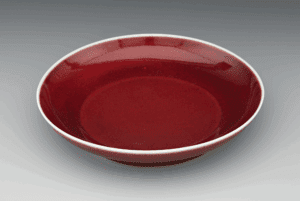
(This image is owned by Smithsonian)
Global Influence
Inspired by Chinese copper reds, Western potters in the late 19th century, such as Ernest Chaplet and Bernard Moore, began successfully replicating this challenging technique. Today, ceramic artists continue to explore and reinterpret copper red glazes, leading to new artistic expressions.
Beyond the Basics: Mastering the Red
While silicon carbide offers a clever workaround, there’s more to the story of copper red glazes. It’s all about precision and understanding your materials:
- The weight: Getting the amount of silicon carbide right is incredibly important. This is what converts the copper oxide into the compounds that give us those gorgeous reds. Too little and you won’t get full conversion. Too much and the glaze is going to be murky, bubbly, black or all three!
- Copper’s Sweet Spot: It might seem counterintuitive, but there’s a delicate balance to the amount of copper in your glaze. Too little, and the color will be weak or nonexistent. Too much, and your red can turn murky or even liver-colored. Finding that “just right” percentage is crucial. There is a lot less copper in copper red that most believe. 0.5% can be all you need.
- The Glaze Base: While many clear glazes can serve as a starting point, those with a low clay content often yield clearer, more vibrant reds. Think of it as providing a clean canvas for the copper to express itself.
- Tin’s Touch: Tin oxide is incredible important for copper red recipes. This isn’t just for show; tin helps to promote the development of those beautiful red, intensifying the color.
- Application Matters: Don’t skimp on the glaze! A thick application is generally your best friend for achieving a rich, deep red. Thin spots often fire out white. As thin, white edges is a common feature in copper reds.
- Temperature Tantrums: Copper reds are notoriously sensitive to firing temperature. Even a slight deviation can lead to unexpected results, so careful cone-watching and consistent firing are paramount. They want to be fired hot.
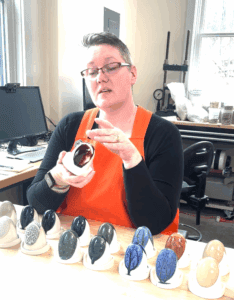
Whether you’re experimenting with silicon carbide in an electric kiln or diving into traditional reduction firing, the journey to a perfect copper red is incredibly rewarding.
Ever heard of a Lava Glaze? It’s as cool as it sounds! READ MORE HERE
Want More on Copper Reds?
Ready to dive deeper?
Loved learning about ceramic glazes? Want to go even deeper? Check out our Workshops & Courses, now available in Spanish, or YouTube Channel where Matt breaks it all down, myth-busting and Stull chart included!









